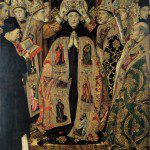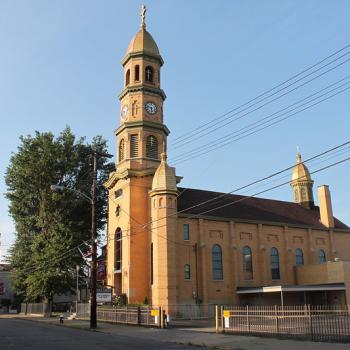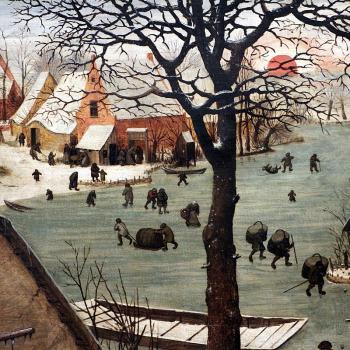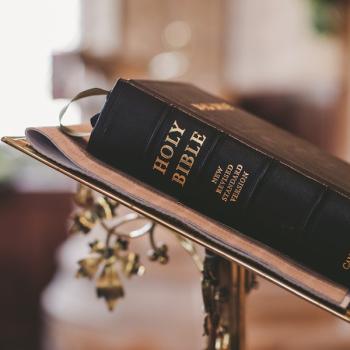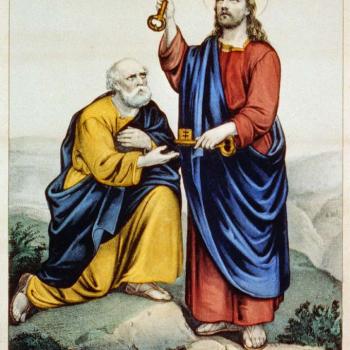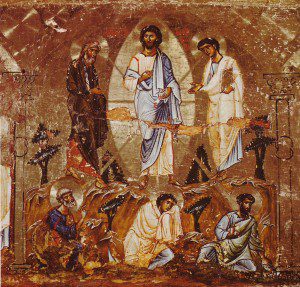
My last post, “Rigid Traditionalism is Idolatry,” has elicited quite the reaction, more so than I had expected. Thankfully, support has outweighed outrage, but anger has still reared its ugly head. Unfortunately, as a graduate student, I don’t have the time to bicker for hours on Twitter (I’m not sure anyone does), nor do I have the time to moderate and respond to every comment on the piece. And so, I’ve decided to write this brief note as a final post-scriptum to what’s taken place. For reasons of length and time, it cannot be exhaustive, but I do hope it will encapsulate my feelings at this point and time, and suggest my desire to stimulate discussion as opposed to devolve into character assassination and meaningless insult.
Almost every negative reaction has entirely missed the point. As I said to one Twitter interlocutor: you’re missing the forest through the trees. I’ll use two example to illustrate this. First, many have commented on an error in the original text that mentioned my older friends recalling pre-Vatican II Masses as uninvolved clouds of incense. The supposed flaw in my logic is that Low Masses (mostly the subject of my discussion) do not use incense. Checkmate, or so many have thought. But there are two problems with this line of argumentation. First, there were non-Low Masses before Vatican II; these could easily have involved incense, but failed to engross the congregation. If this will not be granted, there’s an easier answer: I wasn’t quoting anyone in particular and simply used a poetic flourish that didn’t fit (hence my amending it). There are no quotation marks on the page; I was merely collating a series of chats with friends and colleagues using my own words. The problem, then, is not with the truth of their recollection, but simply with my style (and I am more than happy to take the blame). In short, it has no bearing on my actual argument.
The second example is even more suggestive of how badly the post has been misread. Several people have gone out of their way to point to the difference between “priests who can marry” and “men who can marry and then become priests.” This is a fair distinction (and my original statements in the piece were ambiguous): in the East, men must marry before they are ordained. Fair enough. The problem is that this has absolutely no bearing on my point. If the thesis of my post, as stated, is to get people to think historically, that is, not to reify or idolize one particular period, then this distinction is uninteresting. I was not arguing for the reintroduction of a married priesthood. I was merely indicating that the Church’s history is dynamic, that it involves manifest pastoral changes. At one point, in the West, men who were priests could also have wives. That should be of interest as we discuss the history of our Faith! The exact nature of marriage and the priesthood is not the point. All a reader is supposed to take away is the fact of historical difference and malleability.
In short, while I’ve appreciated everyone’s interested attention to my language, such points have no bearing on the actual stakes of my article. At best, they are helpful for dialogue and more rigorous historical thinking; at worst, they are distractions, mere attempts to obfuscate the importance of the Church’s historicity.
Anyone who takes my piece as an argument for specific pastoral policy decisions has gone too far. Not only do I say just as much in the post but I also (and anyone who actually has read the other things I have written knows this) have a history of defending what we might see as “more rigorous” practices. Again, the point is that we cannot reify the Church. No argument for particular changes was made.
And so, these misreadings trouble me, because despite praising the FSSP and ICKSP, endlessly making clear that I was not talking about all traditionalists (#notalltrads, one might say), and signposting my point over and over, people have gotten upset. Part of this might stem from my perceived lack of focus, i.e. my not naming names as to the exact traditionalists I had in mind. Reading the post, it’s not hard to see that I provide links to occasional (if not repeat) offenders. Bracketing groups like the SSPX and full schismatics (who are obviously implicated), I had in mind anyone who wantonly assaults the pope at every turn, anyone who shows him no charity. But, more importantly, I had in mind those who denigrate those who do not attend the Latin Mass, who accept or float about the condemnation of churchgoing Catholics not of their own kind, even if they do not openly say such things.
And, if you were offended, know that such was never my intent. But, as a friend reminded me, one who takes offense at the mere mention of idolatry, and who responds with limited charity, may, in fact, be an idolater. If you have truly not made an idol out of the customs to which I have drawn attention, then my mention of the Church’s historicity should elicit a desire for dialogue and not insult, not a tarrying in unimportant details, but a robust conversation about which customs and pastoral manifestations, in line with the Faith, are best for our age. We are all sinners, all called by our Lord to tear the beams from our eyes, to smash the idols we have made for ourselves in striving to worship the triune God.
I have received a few warm responses from Latin traditionalist friends. Such reactions have brought me joy, joy in the knowledge that Catholics, whether overtly traditional, Novus Ordo goers, Byzantines, or others, can have a frank conversation about the diversity contained within, and always modified by, the unity of the Church. I pray that such discussions might be more common as we move forward.
In leaving you, (and I do ask you to pray for me, whoever might read this) I wish to quote David Bentley Hart, an Eastern Orthodox theologian, whose erudition is, I think, far above my own paygrade. May this piece serve as my final word (at least for the time being) on this subject. Ad majorem Dei gloriam! Slaveety Yoho:
I am obviously talking about a certain kind of ecclesial extremist, of the sort who can imagine no version of the Catholic faith that does not conform in every detail to the practices and prejudices [of his desired form of the Faith…] and all of our churches contain such persons. Of course, in almost every case, the great irony of such persons—whether they be ultramontanist Catholics or what we call the “ultra-Orthodox”—is that what they generally take to be the immemorial heritage of the Catholic faith is the distinctly modern form of the church […] Thus when a certain kind of militantly conservative Catholic priest is heard to claim that the celibate priesthood was the universal practice of the early church, established by Christ in his apostles, and that therefore even married Catholic priests of the Eastern rites possess defective orders, the historically astute among us should recognize that such a delusion is possible only for a person having no understanding of the priesthood more sophisticated than his pristine boyish memories of Fr O’Reilly’s avuncular geniality, and the shining example of his contented bachelorhood, and the calm authority with which he presided over the life of the parish church of St Anne of Green Gables. And when this same priest ventures theological or ecclesiological opinions, it is almost certain that what he takes to be apostolic Catholicism will turn out to be a particular kind of post-Tridentine Baroque Catholicism, kept buoyantly afloat upon ecclesiological and sacramental principles of an antiquity no hoarier than 1729.


